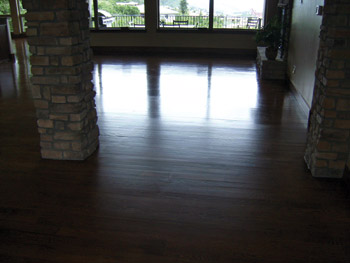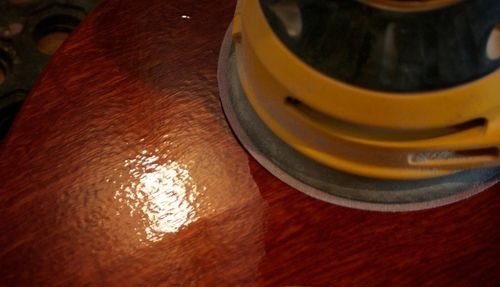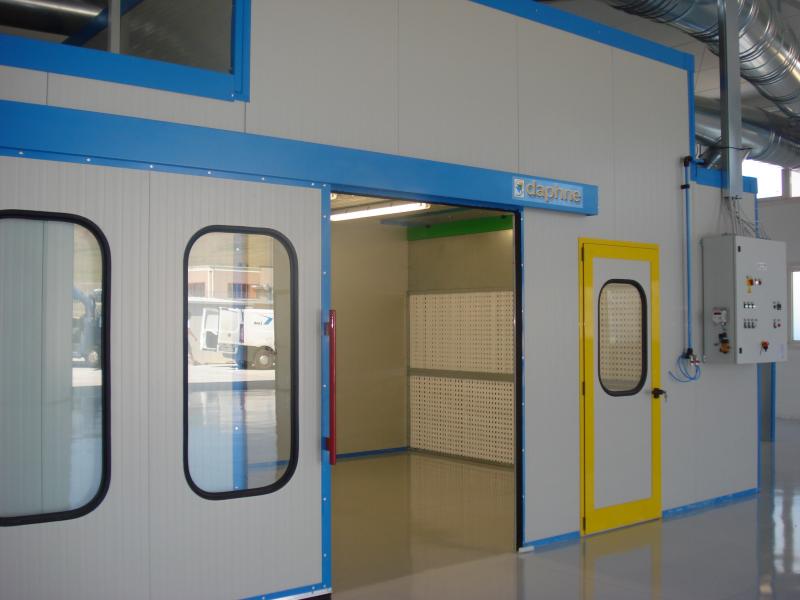Another finishing defect is the surface with uneven gloss. For example, a table top or cupboard door that shines more on one side and less on the other. Find out why these problems occur below.

What is gloss
The degree of brightness of a lake shows how much of the light radiation is reflected and translates into the brightness of the lake - strong, less intense or not at all. Small variations in gloss are hardly visible to the naked eye. They can only be determined with the help of apparatus. But they are not the ones that bother. The big problems arise when different degrees of gloss are visible on the finished piece of wood, or when the customer has ordered a matt piece of furniture and receives a glossy one, or vice versa.
Degree of gloss expresses the extent to which a finished surface reflects light. Depending on the amount of reflected radiation, surfaces can be divided into matt and glossy. This property is practically transferred to the finished surface by the final coat of varnish applied, which has a specified gloss level in the product code and data sheet. The gloss level is measured by glossmeter.

Why we have different gloss even if we used varnish from the same can
Differences in gloss may occur for several reasons.
Surface preparation before varnish application is one of the causes. The gloss level mentioned in the data sheet is determined on a sample of varnish applied to a piece of glass. In order to have the same gloss, the surface must be as flat as possible, with no bumps or roughness. A sufficient quantity of primer is needed to ensure that the sanding between coats can be done as well as possible. This is why at least two coats of primer are recommended. Such a quantity allows for proper sanding, resulting in a flat surface that removes any unevenness and imperfections in the wood remaining after sanding. white grinding.
Variations in gloss also occur if material is applied in different quantities. In spray applications, for example, spraying twice over the same surface increases the amount of material applied to that spot and the surface will no longer be perfectly flat. The finished surface will have varying degrees of gloss, and for a glossy surface this means a distorted reflection of images.
Mix the material very well in the drum before use is another condition for not having gloss variations. The gloss of a varnish is achieved by adding a quantity of very fine light-reflecting particles to the base resin. The generic name for these particles is matting or matting agent and depending on the amount added, the lacquer is glossier or duller. The matting agent is heavier than the resin and over time it settles. If the can of varnish is not well mixed before application, then there will be a difference in gloss between the furniture to which varnish has been applied at the top of the can and the furniture with material on the bottom of the can.
Type of diluent used is very important when it comes to the degree of gloss. We said that to reflect radiation well, the lake should lie on as flat a surface as possible. If the varnish does not lie very flat, it appearsorange peelă and influences the degree of gloss. Always use the thinner recommended for the type of varnish and the conditions in the application area (temperature, humidity). A thinner that evaporates quickly does not give the varnish time to set to reflect light properly.

When using two-component polyurethane-type products, use of another catalyst than recommended may result in a change in gloss. In general, if polyurethane catalyst is added over polyurethane varnish, the resulting mixture should cure. The proportion added and the formulation of each part influence the curing time, the hardness of the film, its elasticity and gloss. There are catalysts that can change the gloss by as much as 20-25 units.
Large temperature variationscan lead to changes in gloss. The gloss level mentioned in the data sheet is determined in the laboratory at a temperature of 20°C. At too low a temperature the varnish cannot de-plasterise and at too high a temperature the varnish and primer become very fluid and do not provide the necessary charge for correct radiation reflection. In addition, the varnish, the wood substrate and the surrounding environment must be at approximately the same temperature.
Dust in the workspace can change the gloss level, especially for glossy varnishes. They should be applied in as clean a room as possible, preferably pressurised spray booths or capped finishing lines.

When variations in gloss are observed, it is advisable to check first that all the above recommendations have been followed and then, if the defect persists, to contact the manufacturer.
Cycle Finishing defects also presents other problems on finished surfaces.
I hope you find the above information useful. As usual, additions are welcome. And if you have any questions or queries, please leave them in the space below. I will certainly answer






























[...] used. If they are followed, quality finishes can be achieved. Omitting them leads to finishing defects, and remedying them means additional consumption of materials and labour, i.e. costs [...]